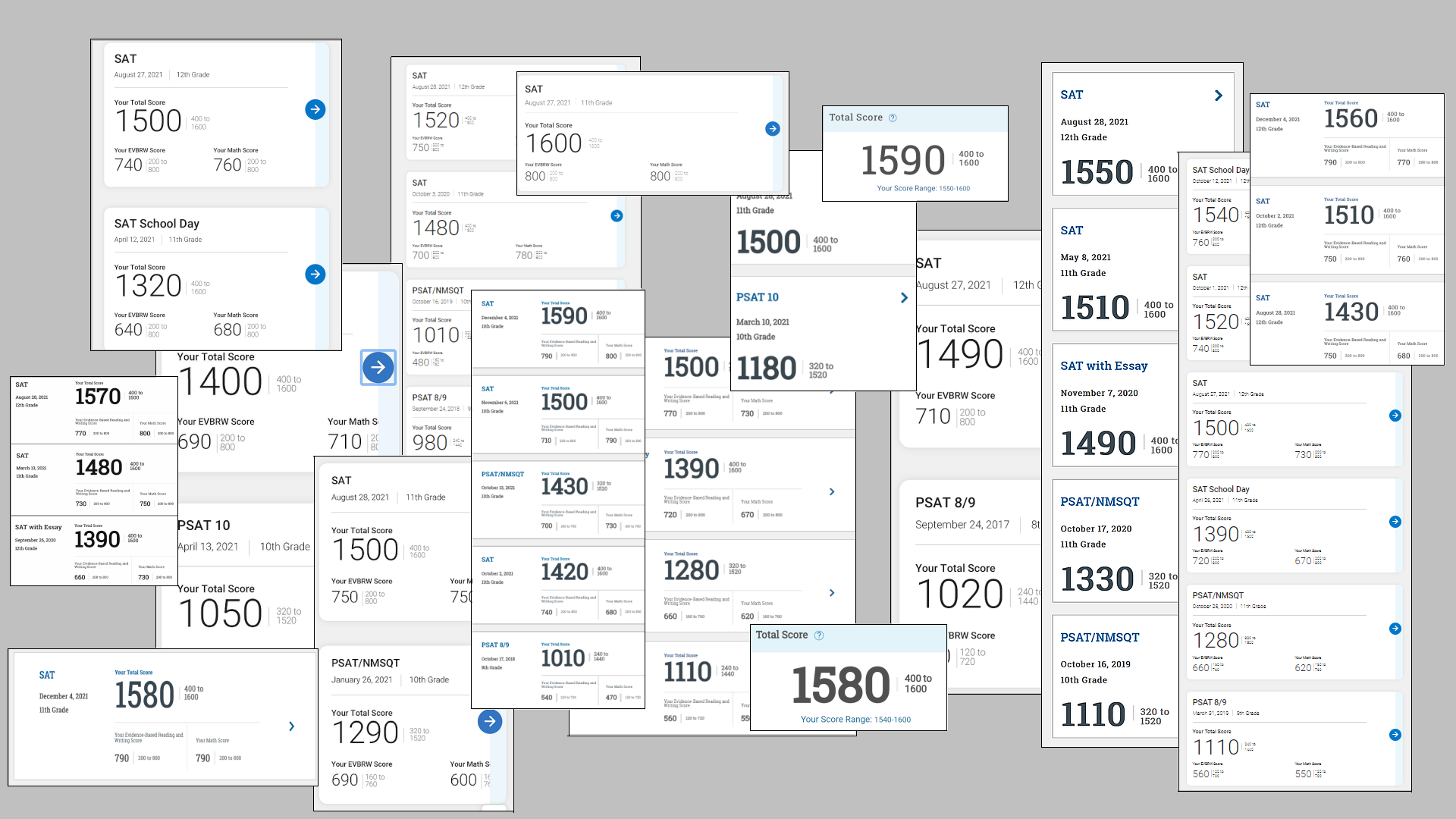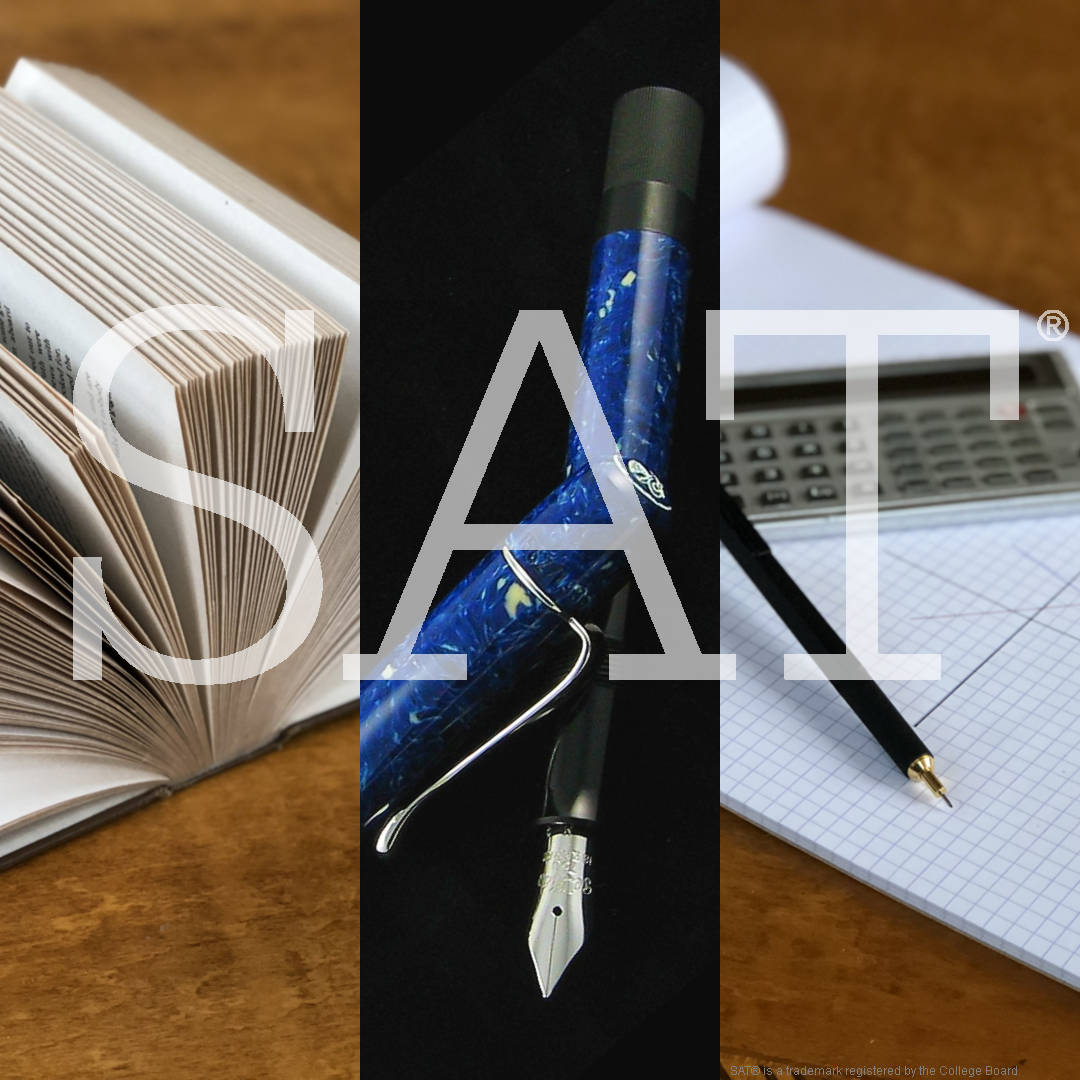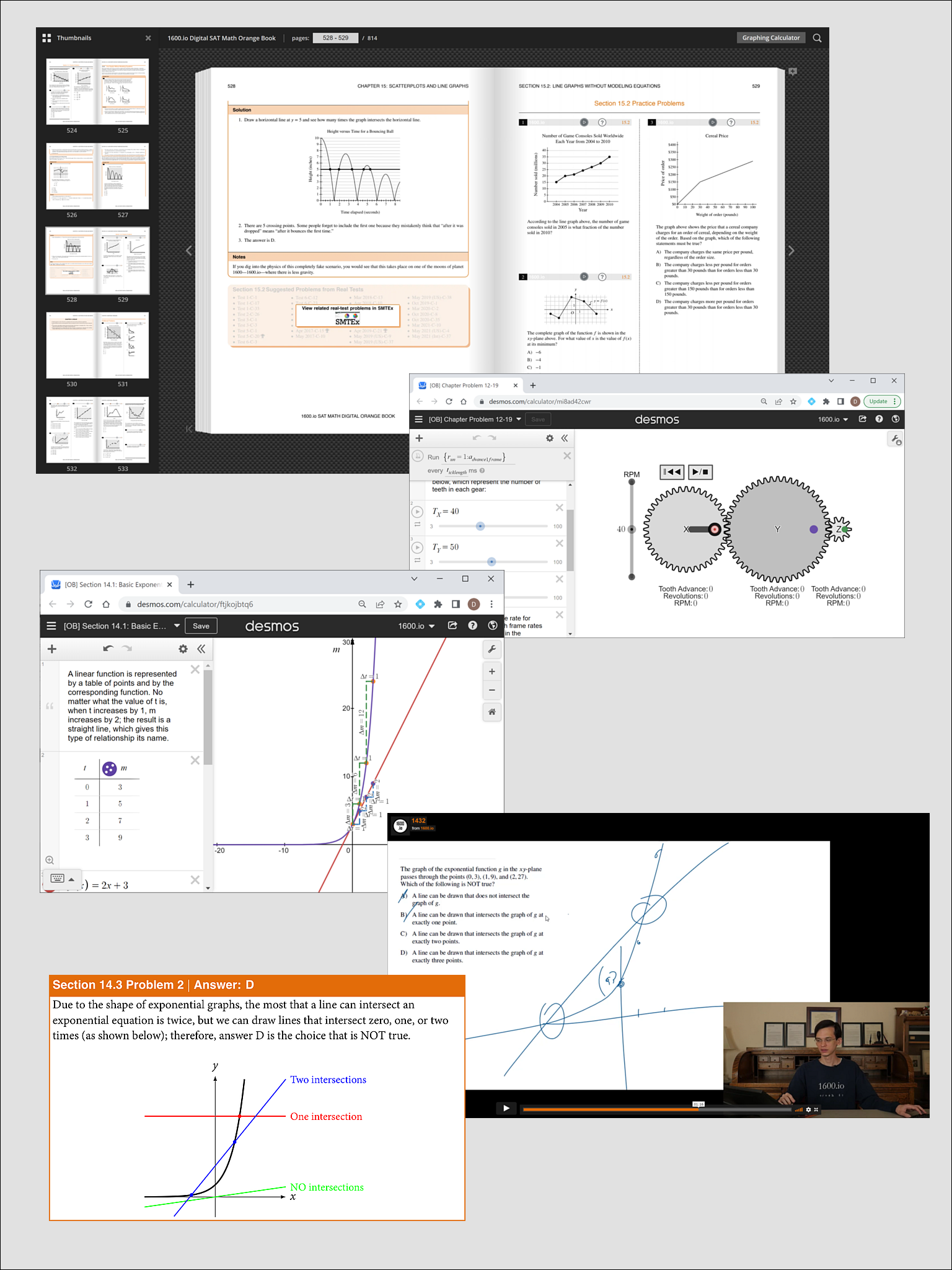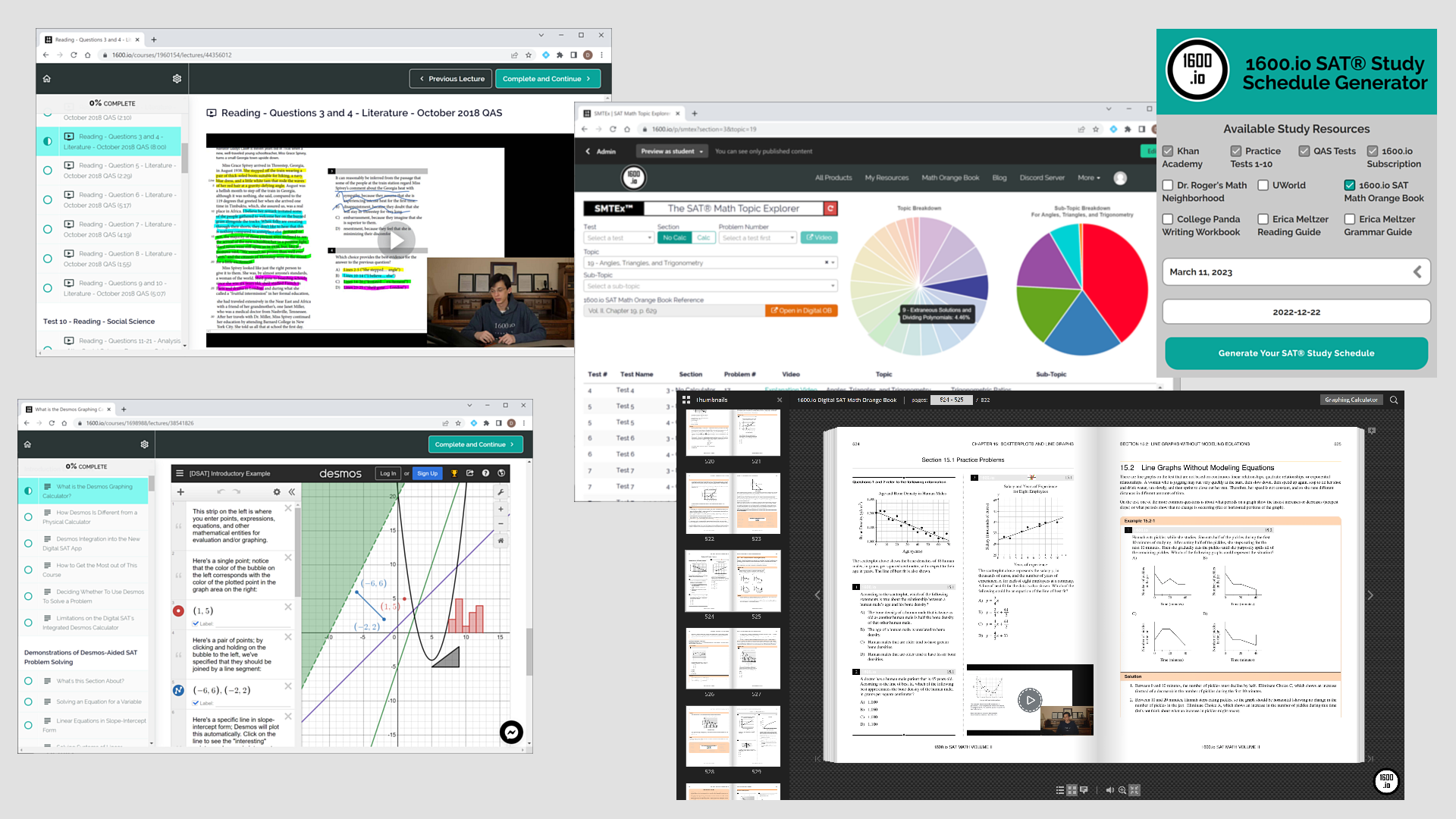Have It All—for Pennies a Day
Our Premium Membership includes unlimited access to all our SAT resources including:
-
5,000 explanatory videos by a Yale graduate for all sections of more than 30 pre-Digital and Digital SATs, along with interactive Desmos solutions for Digital SAT math problems
- The industry-leading interactive SAT Math Orange Book
- Our indispensable course for Digital SAT test-takers: Mastering Desmos for the Digital SAT
- A host of other powerful tools developed by the Ivy-educated 1600.io team for the reading, writing, and math sections of the SAT.
Choose a weekly, monthly, or annual membership plan. As low as $0.27 per day.
It's the ultimate SAT math instructional resource: An interactive math course covering every pre-Digital and Digital SAT math topic. Includes over 1,000 example and practice problems with autoscoring quizzes, pop-up video and written explanations, interactive Desmos graphs, hyperlinks to the SAT Math Topic Explorer (SMTEx), and much more.
"How I improved my Math score from a 580 to 760: I first tried using [another book] like everyone here recommended but it was just too complex for me personally and demotivated me. The book that REALLY helped me was the Orange Book by 1600.io. The way they explain concepts is just amazing."
Included in our Premium Membership, or available separately; also offered as a two-volume print book set.
Try It—for Free
Not sure about whether 1600.io is for you? Try a free preview of our resources. You'll get access to our legendary SAT strategy course, our famous video explanations for several SATs (plus Desmos graph explanations for Digital SAT math problems), a free preview of several full chapters in our SAT Math Orange Book, and a trove of other tools and resources. Get access instantly—no credit card needed!



